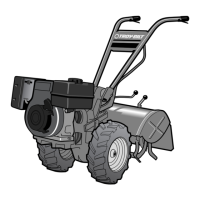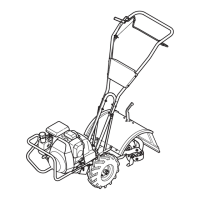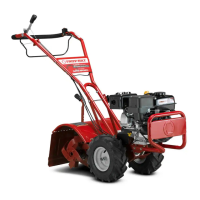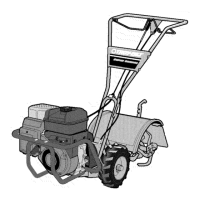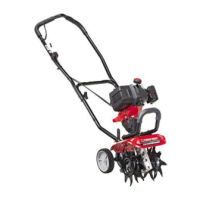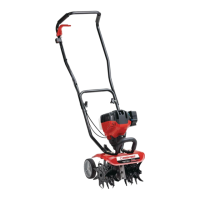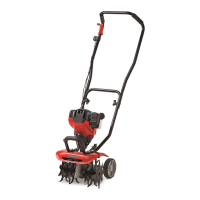Avoid Tilling Wet, Soggy Soil
Tilling wet soil often results in large, hard clumps of soil
that can interfere with planting. If time permits, wait
a day or two after heavy rains to allow the soil to dry
before tilling. Test the soil by squeezing it into a ball. If it
compresses too easily, it is too wet to till.
Avoid Making Footprints
When possible, walk on the untilled side of the tiller to
avoid making footprints in the freshly tilled soil. See FIg.
4-3. Footprints cause soil compaction that can hamper root
penetration and contribute to soil erosion. They can also
“plant” unwanted weed seeds back into the newly tilled
soil.
Suggested Tilling Patterns
When preparing a seedbed, go over the same path twice in
the first row, then overlap one-half the tiller width on the
rest of the passes. See Fig. 4-11.
•
•
•
When finished in one direction, make a second pass at
a right angle . See Fig. 4-12. Overlap each pass for best
results. In very hard ground it may take three or four passes
to thoroughly pulverize the soil.
If the garden size will not permit lengthwise and then
crosswise tilling, then overlap the first passes by onehalf a
tiller width, followed by successive passes at one-quarter
width. See Fig. 4-13.
•
•
Figure 4-13
Figure 4-11
Figure 4-12
19sectiOn 5 — OperatiOn
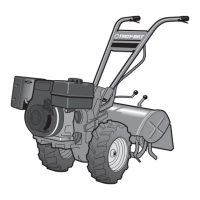
